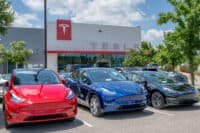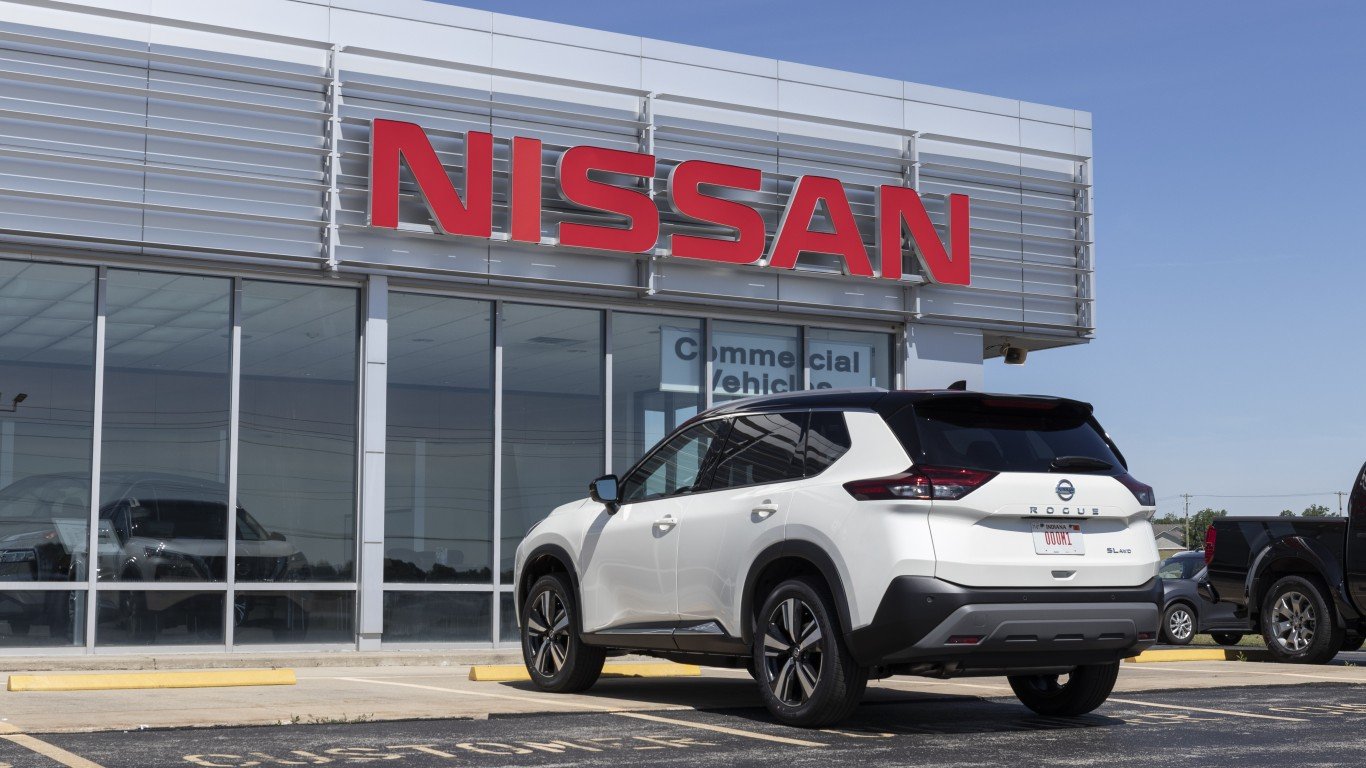

On November 18, 2010, General Motors Co. (NYSE: GM) exited bankruptcy and resumed trading on the New York Stock Exchange. Fiat Chrysler Automobiles N.V. (NYSE: FCAU), following a government-forced bankruptcy in 2009 that created the company, began trading in January 2014. Of the so-called Detroit Three, only Ford Motor Co. (NYSE: F) managed to escape bankruptcy during the financial crisis.
[in-text-ad]
Since November of 2010, GM stock has traded down about 4.7% and Ford stock traded down about 45%, and FCA stock trades up more than 110% since October 2014. Prior to the announced $50 billion merger between FCA and Peugeot late last year, FCA stock had traded up more than 200% since its return to the New York Stock Exchange.
New car sales in the United States could drop by 5 million to 6 million units this year from a 2019 total of around 17 million. By the time the COVID-19 crisis ends, do any of these venerable automakers stand a chance of thriving again? How long will it take? How will investors’ demands for dividends affect the recovery?
On the face of it, FCA shareholders appear to be the winners, at least this year. The merger with Peugeot comes with a special dividend of around $1.2 billion for FCA shareholders when the deal is completed. That completion is expected in the first quarter of 2021. Last week, John Elkann, board chair of FCA, said that the coronavirus pandemic “has further underlined the compelling logic of this merger.”
Neither Ford nor GM currently pays a dividend. For Ford, that means an annual savings of about $2.4 billion in cash based on the March dividend payment of $0.15 per share. For GM, the cash savings is virtually the same, based on a quarterly dividend payment of $0.38, last paid in March.
Worse, perhaps, is that neither GM nor Ford has indicated when the company may begin paying a dividend again. There’s no chance that either will resume paying a dividend this year, so let’s look at next year.
GM posted earnings per share of $4.82 in 2019, while Ford reported EPS of $1.19 last year. The current consensus estimate for Ford earnings in 2021 is $0.56 a share, and the estimate for 2022 is $0.91 per share. That’s not quite 80% of the 2019 dividend.
The story’s not much different at GM, even though analysts expect the company to post EPS of $1.07 this year, rising to $4.00 a share in 2021 and $5.18 per share in 2022. Analysts appear to believe that GM will recover more than 80% of its dividend as soon as next year.
None of the Detroit Three has accepted any liquidity or bailout payment from the federal government. Ford has drawn down its credit lines but at a very stiff price. The company’s debt is junk-rated, and at least some of the credit carries an interest rate of around 9%.
GM has maintained (barely) an investment grade rating on its debt after drawing $15.9 billion on its various revolving credit lines.
At this point, GM appears to be better positioned than Ford to reinstate its dividend, although that may not happen until late next year.
But paying out dividends will have an impact on the introduction of new electric vehicles (EVs). GM CEO Mary Barra said in early March that the company plans to spend $20 billion through 2026 to get some 20 new EVs introduced by 2023, led by a new Chevy Bolt later this year. Barra insisted that GM has “what it takes” to put everyone in an EV. She also insists that the company’s EV strategy will supplement, not supplant, revenue.
Ford, meanwhile, plans to invest around $11.5 billion to introduce 40 EVs and hybrids by 2022. The company invested $500 million in electric truck maker Rivian early last year and participated in another $1.3 billion round later in the year. The company also has formed an alliance with Volkswagen, with plans to introduce a new EV in Europe by 2023. While some investors had hoped for a merger, that did not happen, and both companies have said there are no plans for such a move.
Fiat Chrysler’s future depends on its coming merger with Peugeot. While passenger vehicles and EVs may dodge antitrust concerns, the European Union is expected to scrutinize the combined company’s share of the market for commercial vans. If this merger is squashed, FCA faces a bumpy future. The company is also well behind both Ford and GM in developing EVs. The merger may fix that or it may not.
Looking to EVs as the future for both GM and Ford is undoubtedly the correct strategy. The two companies (along with every other traditional automaker) face a real threat from Tesla Inc. (NASDAQ: TSLA), however. Tesla’s lead in EVs could be insurmountable, especially if it takes another five years or so for traditional carmakers to ramp up production of EVs.
Take This Retirement Quiz To Get Matched With An Advisor Now (Sponsored)
Are you ready for retirement? Planning for retirement can be overwhelming, that’s why it could be a good idea to speak to a fiduciary financial advisor about your goals today.
Start by taking this retirement quiz right here from SmartAsset that will match you with up to 3 financial advisors that serve your area and beyond in 5 minutes. Smart Asset is now matching over 50,000 people a month.
Click here now to get started.
Thank you for reading! Have some feedback for us?
Contact the 24/7 Wall St. editorial team.
 24/7 Wall St.
24/7 Wall St.


